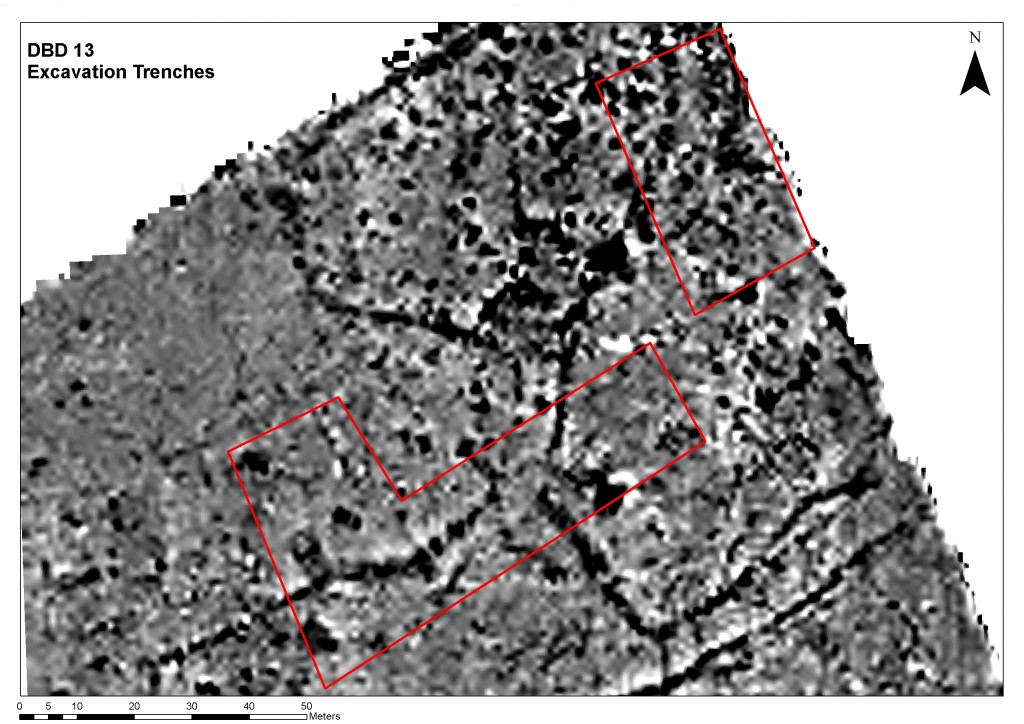Tuesday 4th June 2013
Before revealing all of the exciting finds from today, a short description will be given to show the areas of the site that are being focused upon in order to answer the prioritized research questions and to aid overall site interpretation. Below is an image generated by a geophysical survey, highlighting the main areas currently under excavation. The areas mainly focused on this year are the ditch of the Banjo Enclosure, the extent of the Roman “villa” and the house platforms with their associated features (also known as Area J).

Geophysical survey Image highlighting the main areas currently under excavation, courtesy of Harry Manley of Bournemouth University.
In previous years of excavation, almost entirely intact Iron Age pots with deliberate holes punched through the base have been recovered, usually in an upside-down position. Due to the similarity of the pot style to modern-day plant pots, it has been hypothesized that these finds are indeed plant pots. In order to give further evidence, chemical analysis of the soil inside has been undertaken in order to determine if the soil was similar to compost for example. Previous analysis has shown that the soil inside is similar to compost! Today such a pot was discovered by Jayne Matthews and Amy Green at the bottom of feature 603, which is below the Roman “villa” in relation. Unfortunately the pot was not whole enough for the soil analysis to be undertaken but it is an extremely interesting find to aid the interpretation of the Iron Age activities on site.
Across the site, even earlier finds were recovered from Feature 2107 by Jane Randall, an archaeology student from Bristol University. Although the feature is considered to be roughly from the Later Roman period, much flint debitage was recovered in addition to a thumbnail scraper and a flint blade. The thumbnail scraper typology is indicative of the Early Bronze Age period, known as the Beaker period. The blade is possibly from the Late Neolithic or Early Bronze Age period and is pictured below. The find shows evidence of re-touch and wear emphasizing its importance as a tool in that period!

